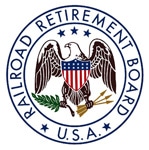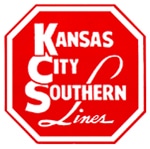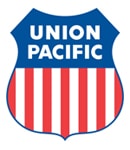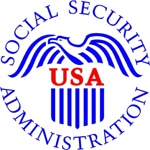WASHINGTON – The U.S. Department of Transportation’s Federal Motor Carrier Safety Administration Oct. 21 announced it has awarded $1 million in grants to nine technical and community colleges across the country to help train returning military veterans for jobs as commercial bus and truck drivers. The funding is provided through FMCSA’s Commercial Motor Vehicle – Operator Safety Training (CMV-OST) grant program.
“Those that we entrust to protect and serve our nation deserve opportunities that utilize the skills and training they received on the job on military bases overseas and at home,” said U.S. Transportation Secretary Anthony Foxx. “We can think of none more appropriate to safeguard our highways as commercial vehicle drivers than the thousands of veterans who have already proven they can safely handle large vehicles under extremely stressful circumstances.”
“These unique grants are designed to help recruit, train and place veterans and their spouses in good jobs that are in high demand and in an industry that is vitally important in keeping our national economy moving forward,” said FMCSA Acting Administrator Scott Darling. “Graduates of these training programs are continuing to serve our nation by ensuring that the goods and products we depend on are delivered professionally, efficiently and, most importantly, safely.”
FMCSA awards CMV-OST grants to organizations that provide truck driving training, including accredited public or private colleges, universities, vocational-technical schools, post-secondary educational institutions, truck driver training schools, associations, and state and local governments, including federally-recognized Native American tribal governments. The funds are used to recruit, train, and provide students job placement assistance after graduation.
The 2014 FMCSA grants announced today will provide training for nearly 400 new students. The awards were made to the following organizations:
- Florida – South Florida State College, Avon Park, Fla., $58,003
- Illinois – Joliet Junior College, Joliet, Ill., $165,800
- Minnesota – Century College in White Bear Lake, Minn., $91,080
- Missouri – Crowder College, Neosho, Mo., $72,160
- Nebraska – Metropolitan Community College, Omaha, Ne., $47,614
- Pennsylvania – Northampton County Area Community College, Bethlehem, Pa., $134,400
- Pennsylvania – The Sage Corporation, Camp Hill, Pa., $249,968
- Texas – Lone Star College-North Harris, Houston, Texas, $73,704
- Virginia – Tidewater Community College, Norfolk, Va., $107,271
The Commercial Motor Vehicle – Operator Safety Training Grant Program was established by Congress in 2005 through the Safe, Accountable, Flexible, Efficient Transportation Equity Act – A Legacy for Users (SAFETEA-LU), to expand the number of commercial driver’s license (CDL) holders possessing enhanced operator safety training to help reduce the severity and number of crashes on U.S. roads involving large trucks and buses.
In July 2014, FMCSA announced that the Military Skills Test Waiver Program had been expanded to include all 50 states and the District of Columbia. Under this program, state licensing agencies have authority to waive the skills test portion of the CDL application for active duty or recently separated veterans who possess at least two years of safe driving experience operating a military truck or bus. Waiving the skills test expedites the civilian commercial drivers licensing application process and reduces expenses for qualified individuals and operating costs to state licensing agencies.
FMCSA also announced this summer that, commencing with Virginia residents, returning military service personnel who possess a state-issued Skill Performance Evaluation (SPE) certificate due to a limb impairment will automatically be recognized as equivalent to an FMCSA-issued SPE certificate and allowed to obtain an interstate commercial driver’s license (CDL). FMCSA encourages other state licensing agencies to establish comparable equivalency SPE programs.
To learn more about the Commercial Motor Vehicle – Operator Safety Training Grant Program, please visit http://www.fmcsa.dot.gov/grants/cmv-operator-safety-training-grant/commercial-motor-vehicle-cmv-operator-safety-training.
For a listing of last year’s CMV – OST grant recipients, please visit http://www.fmcsa.dot.gov/newsroom/federal-motor-carrier-safety-administration-announces-almost-1-million-train-veterans.
To learn more about the Military Skills Test Waiver Program, please visit http://www.fmcsa.dot.gov/registration/commercial-drivers-license/military.
To learn more about the U.S. Department of Transportation’s dedication to our nation’s veterans, please visit http://www.dot.gov/veteranstransportationcareers.
 The standard Medicare Part B monthly premium will be $104.90 in 2015, the same amount as in 2014.
The standard Medicare Part B monthly premium will be $104.90 in 2015, the same amount as in 2014. Pennsylvania State Legislative Director Paul Pokrowka is asking all SMART Transportation Division members from Pennsylvania to take action and contact the office of Gov. Tom Corbett, requesting he sign House Bill 2354 into law.
Pennsylvania State Legislative Director Paul Pokrowka is asking all SMART Transportation Division members from Pennsylvania to take action and contact the office of Gov. Tom Corbett, requesting he sign House Bill 2354 into law. In a press release Oct. 14, CSX announced record third quarter profits. The railroad said that operating income increased 16 percent and operating ratio improved 220 points. Operating income came in at $976 million with an operating ratio of 69.7 percent. CSX also saw volume increases of seven percent.
In a press release Oct. 14, CSX announced record third quarter profits. The railroad said that operating income increased 16 percent and operating ratio improved 220 points. Operating income came in at $976 million with an operating ratio of 69.7 percent. CSX also saw volume increases of seven percent. Kansas City Southern reports record quarterly revenues and carloads in a press release for the third quarter of 2014. The railroad recorded record revenues of $678 million, an increase of nine percent over the same quarter last year.
Kansas City Southern reports record quarterly revenues and carloads in a press release for the third quarter of 2014. The railroad recorded record revenues of $678 million, an increase of nine percent over the same quarter last year. Canadian Pacific Railway reports record financial results for the third quarter. The company claims the third quarter results are the strongest in the company’s history.
Canadian Pacific Railway reports record financial results for the third quarter. The company claims the third quarter results are the strongest in the company’s history. Canadian National Railway reported increases in net income, operating income and revenues for the third quarter. Net income saw a 21 percent increase to C$853 million, up from last year’s C$705 million. Diluted earnings per share came in at C$1.04, also up from last year’s recorded C$0.84 per diluted share.
Canadian National Railway reported increases in net income, operating income and revenues for the third quarter. Net income saw a 21 percent increase to C$853 million, up from last year’s C$705 million. Diluted earnings per share came in at C$1.04, also up from last year’s recorded C$0.84 per diluted share. Union Pacific railroad reports record financial results are at an all-time high for the third quarter in a press release Oct. 23. Net income came in at a $1.4 billion or $1.53 per diluted share, a 23 percent improvement. Last year’s results for the same quarter were at $1.15 billion or $1.24 per diluted share.
Union Pacific railroad reports record financial results are at an all-time high for the third quarter in a press release Oct. 23. Net income came in at a $1.4 billion or $1.53 per diluted share, a 23 percent improvement. Last year’s results for the same quarter were at $1.15 billion or $1.24 per diluted share.
